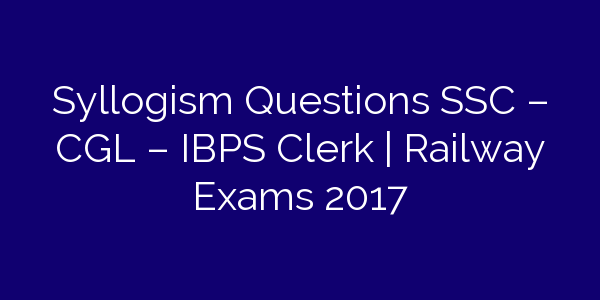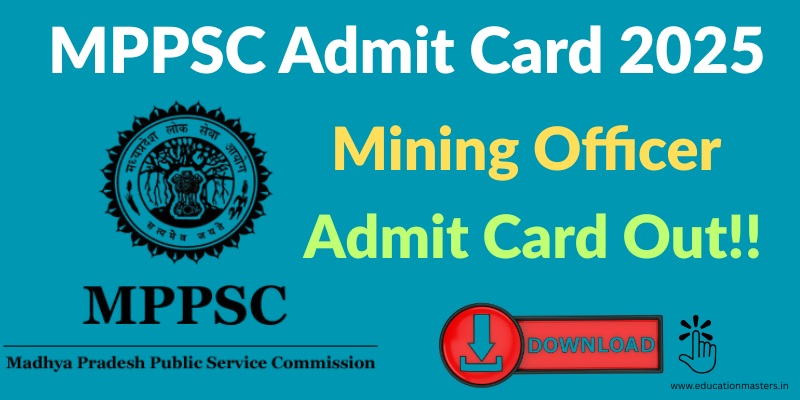Important Polity GK Notes for UKPSC, PCS and NT Exam
By Roopali Thapliyal | Political Science | Jul 20, 2017

Here, we are sharing the important polity GK / General knowledge notes for Uttarakhand government competitive exam, UKPSC exam, NT exam, PCS main exam, IAS exam, Group c (Samuh G) and other competitive exams poste by VYAS IAS Academy Dehradun.
Importance of Preamble
The Preamble establishes the main objectives of the Indian Constitution .preamble, which is the introduction to the Constitution, Contains the Spirit or essence of the Constitution.
We the People of India ( the Constitution Derives its authority From the people of India ), Having Solemnly resolved to Constitute India into a Sovereign (there is no authority inside or outside India on which the Country is in any way Dependent ) Socialist (Article 39 of DPSP ,Secular (Sarva Dharma Sambhavana i,e Equal Protection to all Religion while the state has no religion ) Democratic (People vote for their representative ) ,Republic (Head of the state to be Elected ) and to Secure to all its citizens .
Justice Social (Absence of Discoimination on the Grounds of race, Coste , Sex or Language - Article 17 & 18, Economical (DPSP ) and Political (Fundamental Rights)
Liberty of Thoughts, Expression, belief faith and worship (Article 19,25,28)
Equality of Status, and of opportunity and to Promote amoung them all (Article 15 ,17 18 ,39 )
Fratenity Assuring the Dignity of the individual and the Unity and integrity of the National (Article 51 - A)
Hence The Preamble Presents all the Future objectives which is to be achieved by the Successive Governments by Using the Constitution Property .
Concept of State in Constitution
The ‘State ‘ was First Defined by the Treaty of west folia , Ethens Acccording to which a ‘ state ‘ should have the following Four Features : -
III. Geographical Area
The Indian Constitution Defines the ‘states ‘ in Article 12 & 36 According to which the ‘ State Includes the Government and the Legislature of Each of the states and all local or other Athourities with in the territory of India .
While Part VI of the Constitution Defines the Definite Geographical Area of a State Within the Indian Union
Part - I of the Schedule I of the Constitution Also Deals with the Area, Boundary of States within the Union
Indian Constitution is a Borrowing Bag, Discuss
Indian Constitution Has Borrowed it’s Features from Various Succesful Constitution of the World like Britain (Parliament, Single Citizenship, CAG ), USA (Preamble, Fundamental Rights , Judicial review ), Australia (Concurrent list, Joint sitting ) etc
Indian Constitution is Definitely a Mixture of Various Constitution of the world, but our Constitutions Makers had the vast Diversity of our Country, for Example, our Fedralism is Different from USA, we have Given Sufficient Powers to States but residual Powers is in the Hands of Centre, like that of Canada
Our Constitution’s makers Have observed Closely the administration of Britishers in india as well in England, They have observed the Acts Passesd by the British Parliament For India the Nehru Report of !928 Clearly shows how Experts the Indian were in Drafting the Constitution before independence
We Adopted our Constitution for Various Sources, but it is also Evident that none of the sources can Completely Satisfy the interests of vast Indian Society , But our Constitution ‘s Makers have Done Everythings to Safeguard the interests of Every People by Doing the necessary Changes in these Various Sources .
The Constituent Assembly was Sovereign or not ?
The Constituent Assembly of india was set up Under the Cabinet Mission Plan of 1946 . The Constituent Assembly Consisted of 389 Members , out of which 292 members were Elected through the Provincial Legislative Assemblies, while 93 were nominated by Princely States , Four members represented the Chief Commisioners of the Provinces of Delhi, Ajmer, Marwar , Coorg and British Baluchistan
The Elections of the Members were by indirect methods , but the Election was not Possible at That time ,Due to the Consequenses of World War – II , Lack of Money and Facilities etc It is also Evident that almost all the members of the Assembly had active Participation in the Freedom Struggle and the People was Supporting Completely the Freedom Struggle
The Constituent Assembly was not a new thing for Indians Because We Had already Demanded for a Separate Constitution For India ( in Nehru Report ,1928 )
After independence ,562 Provinces Voluntarily Joined India, Which Clearly Showed Their Belief in Indian Constitution .
Hence, The Constituent Assembly Formally Given By the Britishers to Indian , but it was the Hard work and the Dedication of the Indians that we Got the Largest Successful Constitution of the World .
Importance of Preamble
The Preamble establishes the main objectives of the Indian Constitution .preamble, which is the introduction to the Constitution, Contains the Spirit or essence of the Constitution.
We the People of India ( the Constitution Derives its authority From the people of India ), Having Solemnly resolved to Constitute India into a Sovereign (there is no authority inside or outside India on which the Country is in any way Dependent ) Socialist (Article 39 of DPSP ,Secular (Sarva Dharma Sambhavana i,e Equal Protection to all Religion while the state has no religion ) Democratic (People vote for their representative ) ,Republic (Head of the state to be Elected ) and to Secure to all its citizens .
Justice Social (Absence of Discoimination on the Grounds of race, Coste , Sex or Language - Article 17 & 18, Economical (DPSP ) and Political (Fundamental Rights)
Liberty of Thoughts, Expression, belief faith and worship (Article 19,25,28)
Equality of Status, and of opportunity and to Promote amoung them all (Article 15 ,17 18 ,39 )
Fratenity Assuring the Dignity of the individual and the Unity and integrity of the National (Article 51 - A)
Hence The Preamble Presents all the Future objectives which is to be achieved by the Successive Governments by Using the Constitution Property .
Concept of State in Constitution
The ‘State ‘ was First Defined by the Treaty of west folia , Ethens Acccording to which a ‘ state ‘ should have the following Four Features : -
- Sovereign Institution
- Population
III. Geographical Area
- Government
The Indian Constitution Defines the ‘states ‘ in Article 12 & 36 According to which the ‘ State Includes the Government and the Legislature of Each of the states and all local or other Athourities with in the territory of India .
While Part VI of the Constitution Defines the Definite Geographical Area of a State Within the Indian Union
Part - I of the Schedule I of the Constitution Also Deals with the Area, Boundary of States within the Union
Indian Constitution is a Borrowing Bag, Discuss
Indian Constitution Has Borrowed it’s Features from Various Succesful Constitution of the World like Britain (Parliament, Single Citizenship, CAG ), USA (Preamble, Fundamental Rights , Judicial review ), Australia (Concurrent list, Joint sitting ) etc
Indian Constitution is Definitely a Mixture of Various Constitution of the world, but our Constitutions Makers had the vast Diversity of our Country, for Example, our Fedralism is Different from USA, we have Given Sufficient Powers to States but residual Powers is in the Hands of Centre, like that of Canada
Our Constitution’s makers Have observed Closely the administration of Britishers in india as well in England, They have observed the Acts Passesd by the British Parliament For India the Nehru Report of !928 Clearly shows how Experts the Indian were in Drafting the Constitution before independence
We Adopted our Constitution for Various Sources, but it is also Evident that none of the sources can Completely Satisfy the interests of vast Indian Society , But our Constitution ‘s Makers have Done Everythings to Safeguard the interests of Every People by Doing the necessary Changes in these Various Sources .
The Constituent Assembly was Sovereign or not ?
The Constituent Assembly of india was set up Under the Cabinet Mission Plan of 1946 . The Constituent Assembly Consisted of 389 Members , out of which 292 members were Elected through the Provincial Legislative Assemblies, while 93 were nominated by Princely States , Four members represented the Chief Commisioners of the Provinces of Delhi, Ajmer, Marwar , Coorg and British Baluchistan
The Elections of the Members were by indirect methods , but the Election was not Possible at That time ,Due to the Consequenses of World War – II , Lack of Money and Facilities etc It is also Evident that almost all the members of the Assembly had active Participation in the Freedom Struggle and the People was Supporting Completely the Freedom Struggle
The Constituent Assembly was not a new thing for Indians Because We Had already Demanded for a Separate Constitution For India ( in Nehru Report ,1928 )
After independence ,562 Provinces Voluntarily Joined India, Which Clearly Showed Their Belief in Indian Constitution .
Hence, The Constituent Assembly Formally Given By the Britishers to Indian , but it was the Hard work and the Dedication of the Indians that we Got the Largest Successful Constitution of the World .
सरकारी नौकरियों, जीके अपडेट्स और करेंट अफेयर्स की ताज़ा जानकारी सबसे पहले पाने के लिए:
-
हमारे WhatsApp चैनल को फॉलो करें:
https://whatsapp.com/channel/0029Vb6sjZz0wajwDXcd5B0U -
हमारे Telegram चैनल को फॉलो करें:
https://t.me/educationmastersin -
हमारे Facebook Page को फॉलो करें:
https://www.facebook.com/educationmastersindia






.png)
.jpg)
.jpg)

